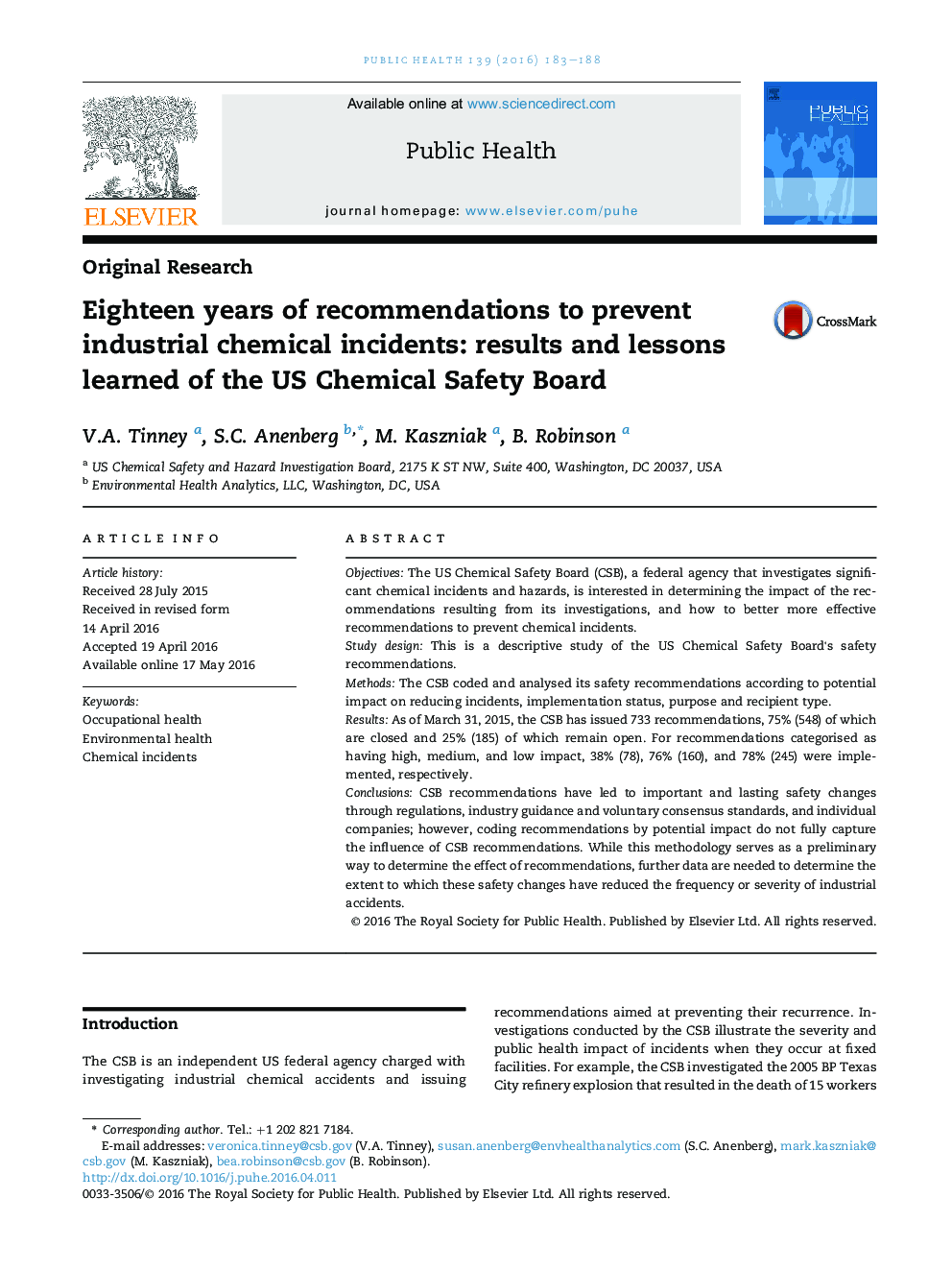| Article ID | Journal | Published Year | Pages | File Type |
|---|---|---|---|---|
| 5122939 | Public Health | 2016 | 6 Pages |
â¢US Chemical Safety Board recommendations have led to safety changes in regulations, industry practices, and facilities.â¢Recommendations categorised as having high, medium, and low impact, 38% (78), 76% (160), and 78% (245) were implemented.â¢However, coding recommendations by potential impact do not fully capture the influence of CSB recommendations.â¢Further data are needed to determine if safety changes have reduced the frequency of industrial accidents.
ObjectivesThe US Chemical Safety Board (CSB), a federal agency that investigates significant chemical incidents and hazards, is interested in determining the impact of the recommendations resulting from its investigations, and how to better more effective recommendations to prevent chemical incidents.Study designThis is a descriptive study of the US Chemical Safety Board's safety recommendations.MethodsThe CSB coded and analysed its safety recommendations according to potential impact on reducing incidents, implementation status, purpose and recipient type.ResultsAs of March 31, 2015, the CSB has issued 733 recommendations, 75% (548) of which are closed and 25% (185) of which remain open. For recommendations categorised as having high, medium, and low impact, 38% (78), 76% (160), and 78% (245) were implemented, respectively.ConclusionsCSB recommendations have led to important and lasting safety changes through regulations, industry guidance and voluntary consensus standards, and individual companies; however, coding recommendations by potential impact do not fully capture the influence of CSB recommendations. While this methodology serves as a preliminary way to determine the effect of recommendations, further data are needed to determine the extent to which these safety changes have reduced the frequency or severity of industrial accidents.
